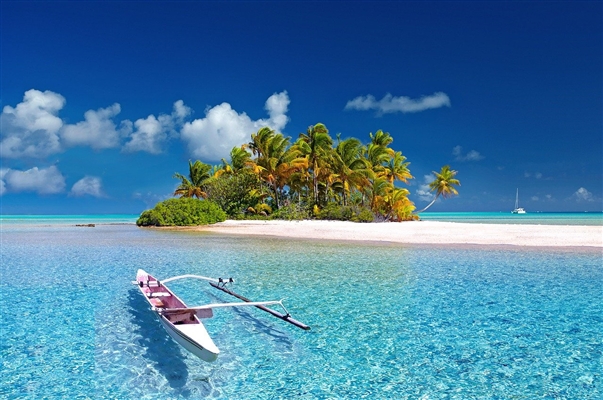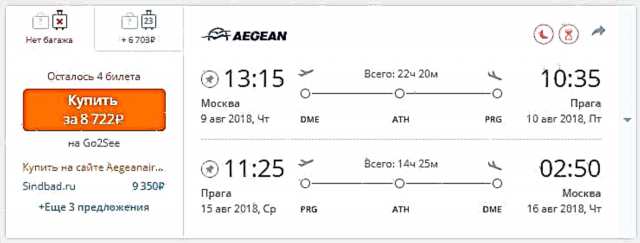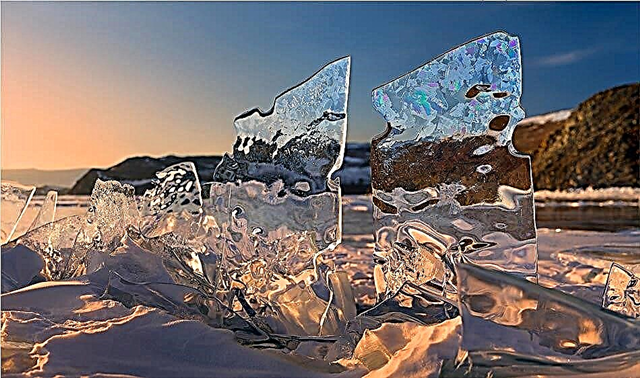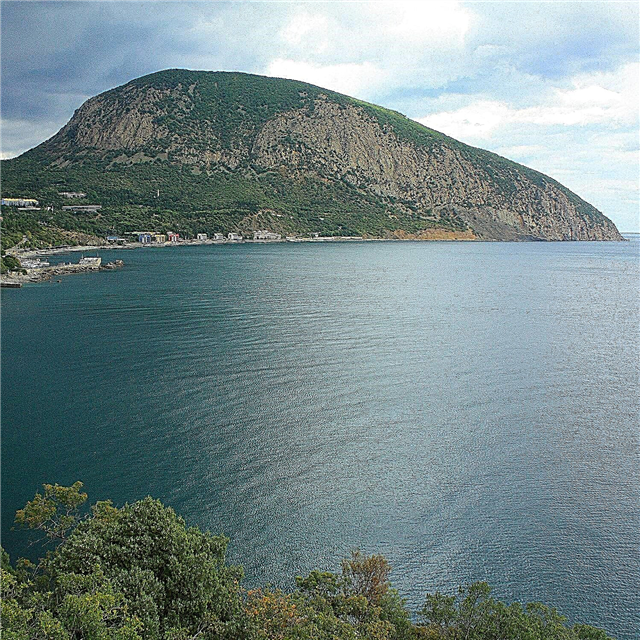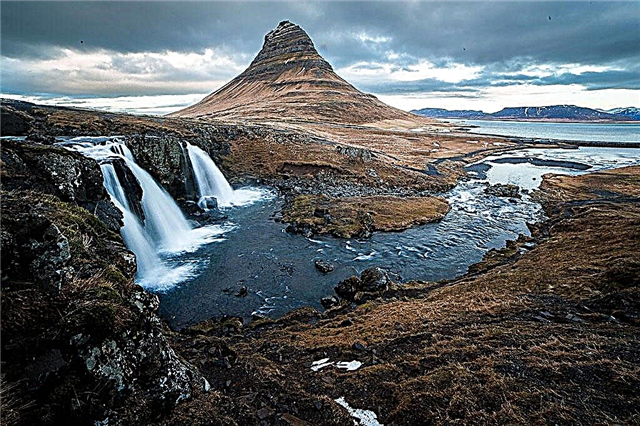The land of geysers, volcanoes and cute ponies has won the hearts of many. Here's how to travel to Iceland on your own. Everything you need to know about accommodation, transportation, food, visa, vehicle rental and itineraries. Bonus at the end - calculating the cost of the trip to Iceland.
Iceland is the perfect country to travel on your own. For those who are used to making their own unique routes, all conditions have been created here: car and mobile home rental, more than 70 campgrounds throughout the country, incredible natural landscapes, cashless payments and accommodation of any level. Here's how to organize your own trip to Iceland and save some money at the same time!
Exchange rate: 10 ISK (ISK) ≈ 6 RUB.

Visa for Iceland
To visit Iceland in 2021, Russians need a Schengen visa. You can get it yourself - you will need a foreign passport (both valid and all previous ones), a civil passport, a visa application form, two color photos 3.5x4.5 cm. You will also need to reserve accommodation for the entire duration of the trip and confirmation of financial solvency:
- statement of income from the place of work (preferably at least 500 € per month);
- a bank statement, on which there must be sufficient funds (from 50 € per day of stay in Iceland).
You also need an original and a copy of health insurance that is valid throughout the Schengen area, insurance coverage must be from 30 thousand euros and 15 days longer than your stay in the country. The insurance costs from 500 to 1500 rubles, depending on the length of stay in the country and the amount of coverage.
Get insurance online on the sites Sravn.ru or Cherehapa - they compare prices from all major insurance companies. You can choose a policy according to the parameters you need and the best price. The cost of the policy is from 300 rubles per week.
It is necessary to attach all tickets or itinerary receipts in both directions and preferably a description of your itinerary by day, indicating the places of stay. Since there are no queues at the Icelandic consulate, the time for obtaining a visa is 8-10 days. There are consulates in Moscow, St. Petersburg and Murmansk.
The cost of a single entry visa to Iceland in 2021 is 35 €.

When to relax in Iceland
Summer. This time of year is high season in Iceland. It is during this period that you will find more excursions, working shops, hotels and campgrounds. However, prices will be the highest.
Fall. Already in September, not all campsites and hotels are open, buses are starting to run less frequently, and the weather is getting colder. Prices are going down, so a trip to Iceland on your own will be much cheaper in early autumn than in July or August. Fishing season begins in autumn, with the maximum catch in September and October.
Winter. During this time, Christmas and New Year tours are popular. This is not only an opportunity to feel all the charm of cold Iceland, but also to see the real miracle - the northern lights.
By the way, the famous Blue Lagoon is recommended to visit in winter or autumn. The healing effect of the thermal spring is strong in cool, gloomy weather.
Air temperature. In summer, during the day about + 15 ° С, and at night about + 5 ° С. In the south, the air warms up to + 19 ° С, but there is a lot of precipitation at any time of the year. In winter, the daytime temperature is 0 ... + 2 ° С and −3 ... −4 ° С at night.

Flights
Prices are per person in both directions from Moscow.
Summer prices. It's more expensive to fly to Iceland in summer. In 2021, in July and August, a ticket to Reykjavik costs from 26 thousand rubles. Towards the end of summer, prices drop to 20 thousand. It is better to book tickets in advance, because a couple of weeks before departure the price can rise decently.
Autumn prices. In the fall, the number of tourists in Iceland drops sharply, the demand for tickets falls and their price becomes lower. For example, in September, a ticket to Reykjavik can be bought for 20 thousand. The same price is for tickets from St. Petersburg. In October, prices are even more pleasant - from 16 thousand in both directions. If you want to save money, fly in the fall.
Bus + plane. For example, you can take a bus to Helsinki or the Baltic cities, and from there fly to Iceland. In 2021, prices for Icelandic low-cost airlines start at 14 thousand in both directions.

Lodging
Housing costs are one of the most significant expenses in Iceland. Check out 10 ways to book your hotel cheaper. Take care of your accommodation in advance, even if you plan to live in tents at the campsite. There are a lot of offers:
- Camping. The cost starts from 10 € per night, you will have to pay extra for a shower, washing clothes and, possibly, for charging your phone and other equipment. Kitchen and toilet are free of charge. If you wish, you can purchase a Campingcard for 100 €, which allows you to live in more than 40 campgrounds in the country. It is sold at all campsites, airports and train stations.
- House on wheels, or camper. The main advantage is that the toilet, shower, bed and kitchen move with you. Renting a mobile home without shower and toilet costs from 150 € per day, with all amenities - from 200 € per day.
- Hostels and guest houses... Most hostels are cozy small houses without stars. This does not interfere with the level of service and accommodation. Visitors note the benevolence of the owners, comfort and cleanliness, modesty and restraint of the interior. Cost - from 45 € per bed, if booked 2-3 months before the trip.
- Hotels 2 * and 3 * cost 90-100 € per night. These are comfortable accommodation options, breakfast and additional services are included in the price.
- Farm stays, domed houses and other unusual options. Living on a real Icelandic farm in the home of local people and away from the big city - what better way to understand the culture of this country? Such housing has everything you need: a kitchen, sleeping places, water and electricity. Cost - from 50 € per night.
It is not customary to rent tents in Iceland. In the campsites themselves, according to tourists, there is no such service. However, on the Airbnb website, tent-type accommodation is presented, and its cost starts from 15-20 € per day.
The main rule: book your stay a few months before your Iceland trip!

Transport
Buses. The transport system in Reykjavik is well developed. The bus fare is 350 CZK, the ticket can be used on other buses within 75 minutes. There is a travel system: for a day - 3300 CZK, for 2 days - 4400 CZK, for 3 days - 4900 CZK.
Air travel. You can save a lot with domestic flights. Most of the flights are operated by Air Iceland and Eagleair. A flight from Reykjavik to Akureyri by Air Iceland will cost about 70 € (about 9000 CZK), and the flight will take no more than an hour. For comparison: for a bus ticket on the same route you will pay up to 150 €, and it will take almost 8 hours to travel.
Taxi. This is not the most budgetary travel option, but on the first day of stay in the country, many choose it. You can get from the airport to the city center for 16000 CZK (with Airportexpress - 2400 CZK), a short distance around the city costs about 2000 CZK. You can order a taxi in advance using the KiwiTaxi service - a car will be waiting for you upon arrival.

Food prices
When traveling on their own in Iceland, tourists spend a lot of money on food. It is hard to save money on it - prices in the country are high. Some even bring food with them - buckwheat, oatmeal, stew, cereals, nuts, dried fruits, chocolate.
Cafe. It costs about 3000 kroons to dine in a cafe for one person, more expensive in a restaurant.
Cost in a cafe:
- fast food - from 1000 CZK;
- main course and drink - from 2500 CZK;
- pizza and a cup of coffee - from 2300 CZK;
- cappuccino - 500 CZK;
- a bottle of beer - from 500 to 1000 CZK, the most expensive varieties are local draft beer;
- a bottle of wine - from 2000 CZK.
The shops. If you have a kitchen, you can save on food.Realistically, it is 1300 CZK per person per day (10 €). Immediately, we note that Bonus supermarkets are the most budgetary ones. Their only drawback is that they can only be found in large cities. We advise you to look at the addresses on the official Bonus website in advance. By the way, pay attention to the opening hours - shops close at 18:30 or 19:30.
Prices in supermarkets in 2021:
- skyr (Skyr) - about 300 CZK;
- liter of milk - 135 CZK;
- a pack of rice - 370 CZK;
- a kilogram of oranges or apples - 270 CZK;
- egg packing - 500 CZK;
- kilogram of cheese - 1800 CZK.
For breakfast, tourists are advised to eat skyr - a traditional dairy product, like soft cottage cheese. It is hearty and high in protein.
Alcohol expensive, so it is better to declare prohibition to yourself while traveling in Iceland or buy in advance in Duty Free. Alcoholic drinks are sold in special stores.

Traveling in Iceland by car
Renting a car in Iceland is a great idea, but take care of it a few months in advance. In the second half of summer, prices rise 2-3 times, and car rental is no exception. If at the beginning of June renting a car for a week costs about 350 €, then in the middle of summer the price can go up to 500 € and more under the same conditions.
Should you rent an SUV? If your goal is just a standard circular route, then no. The roads in Iceland are good, so you can save a lot on cars. If you want to go to the center of the country, then choose a jeep - there are dirt roads and lava fields. SUV rental - from 70-100 € per day and more.
A liter of gasoline in Iceland costs from 230 kroons, along the highway and outside the city - 10-15% cheaper.

Iceland Itinerary: Golden Circle
The Golden Circle is one of the most popular tourist routes in Iceland. It starts and ends in Reykjavik and lasts about 8 hours. The three main stops along the route are Thingvellir Park, Gullfoss Waterfall and the Høykadalur Valley of Geysers.
Thingvellir National Park included in the UNESCO heritage list. He collected on its territory canyons, valleys and lakes, as well as volcanic faults. It is here that the Lake of Wishes and the "Penny Canyon" are located: according to legend, throwing a coin there, you will definitely return here.
Gullfoss, or literally "golden waterfall" - these are two steps 11 and 21 meters high. It is located near the Khvitau glacial river.

Høykadalur Valley... In the valley of geysers is the famous Geysir (Great Geyser), it is active 1-3 times a day. It is his name that has become a household name for all such hot springs. Next to it is Strokkur, a smaller geyser that spews columns of steam and hot water every 10-15 minutes.
Other sights of the Golden Ring. There are less popular, but no less interesting stops along the Golden Circle route in Iceland. For example, the crater of the Kerid volcano, at the bottom of which there is a blue lake. The village of Hveragerdi is located nearby. Under the influence of thermal springs, vegetables and fruits atypical for the north grow here. Visit the church in the town of Skulholt and the Nesjavedlir geothermal power plant.
Advice: it is not prohibited by law to put up a tent and live near a natural monument, but you cannot set up a bivouac on private property.
Route along the Golden Circle by car
What to see in Iceland
Sights
Look for interesting excursions on the Tripster website. Individual and group, no crowds of tourists and in Russian.
Blue Lagoon
The visiting card of Iceland is the Blue Lagoon thermal complex. The water here maintains a temperature of +37 ... + 40 ° С throughout the year. The cost of visiting the complex is 46 euros per person off-season and 60 euros in the summer months. There is also a spa center, saunas, relaxation areas and shops of exclusive Blue Lagoon cosmetics.
There are many hot springs in Iceland - check them out on the HotPotIceland website.
Tourist about the "Blue Lagoon":
Dettifoss waterfall
The most powerful and seething waterfall in Iceland. It is located in the Jökulsaurgljuvur National Park. Icelanders believe the falls are the birthplace of life itself. The shooting of the film "Prometheus" took place here.
Cape Dyrholaey
One of the unofficial symbols of Iceland is puffin birds, and it is on this cape that they live in large numbers. Nature has formed a relief in these places, similar to a stone city with arches and towers, and all this is complemented by a beach with black volcanic sand.

Colored mountains Landmannaloygar
The Landmannaloygar Valley is famous for its vibrant natural colors. This is the most colorful attraction in Iceland - a mountain valley, the rock massifs of which are painted with all the colors of the rainbow.
Ice lagoon
Jokulsarlon is a lagoon of icebergs. You can watch them endlessly. Multicolored ice (black, white, green) breaks off the iceberg, drifts and floats into the sea. If you find yourself in the south of Iceland, be sure to visit this amazing place.

Which cities to visit
Reykjavik
The capital of Iceland is considered one of the most unusual cities in the world. The houses here are small, residential areas are adjacent to lakes and fields, and barns and sheepfolds are still attached to modern buildings. Most of them are now open shops, but the old style is preserved throughout the city.
The famous old houses of Reykjavik are the Parliament House (1881) and the old building of the first Government (18th century).

Akranes
This is an old port city, and now it is a modern industrial center. There are churches, museums and parks, artificial lakes and sandy beaches where you can walk and have picnics. For lovers of easy one-day hikes, there are routes to Mount Akrafja with a height of about 650 m and a trip to the Glimur waterfall with a height of about 200 m - the highest waterfall in Iceland.
Akureyri
The city is located just 40 km from the Arctic Circle, and is popularly called the northern capital of Iceland. Fans of the so-called ecological tourism come here - it is here that natural beauty is located, practically untouched by man: the Godafoss waterfall and the polar island of Grimsey. And in the city itself there is the world's only polar botanical garden.

Travel Tips Before Traveling to Iceland
How to dress in Iceland
On an independent trip to Iceland, be sure to take the standard clothes for active tourists: thermal underwear, a membrane jacket, or better, membrane pants included, trekking shoes and rain protection. Bathing accessories are also worth taking - there are many hot springs in Iceland, and even if you do not go to the Blue Lagoon, you will surely come across at least one thermal pool.
Some people prefer not to bring a warm jacket with them, but to buy a woolen sweater in Iceland and bring it home as a souvenir. However, if you are planning the maximum budget trip, it is better to take all the warm things with you and buy something cheaper as a keepsake. Icelandic sweaters cost up to 150 €, and not everyone can afford such a purchase.
Some tourists advise taking inexpensive underwear and socks with you and throwing them all away during the trip in order to lighten the weight of the backpack and not pay for washing at the camp.

About money
The good news is that you can take a minimum of cash. In Iceland, you can pay with a bank card everywhere - at a camping, hotel, cafe, at a gas station and on any excursion. If you decide to take cash with you, it is better to exchange it at the bank or at the office of The Change Group. The commission is 2-5 €, but there are a lot of bank offices and terminals. Just do not rush to change money at the airport or train station - the rate is unprofitable there.

How much does a trip to Iceland cost in 2021
Let's calculate how much an independent trip to Iceland for two people costs:
- Airplane tickets for two in both directions - from 52 thousand rubles.
- Accommodation: 30 € per day in a good campsite, weekly stay - 210 €, that is, about 14,000 rubles.
- Meals: 20 € per day (we cook on our own + one snack in a cafe), we get 40 € for 7 days - 280 €. This is about 20,000 rubles.
- Visa for two: 70 €, that is, about 5000 rubles.
- Insurance from 600 rubles for two. Buy insurance →
In total, a 7-day trip to Iceland for two costs about 100 thousand rubles.


